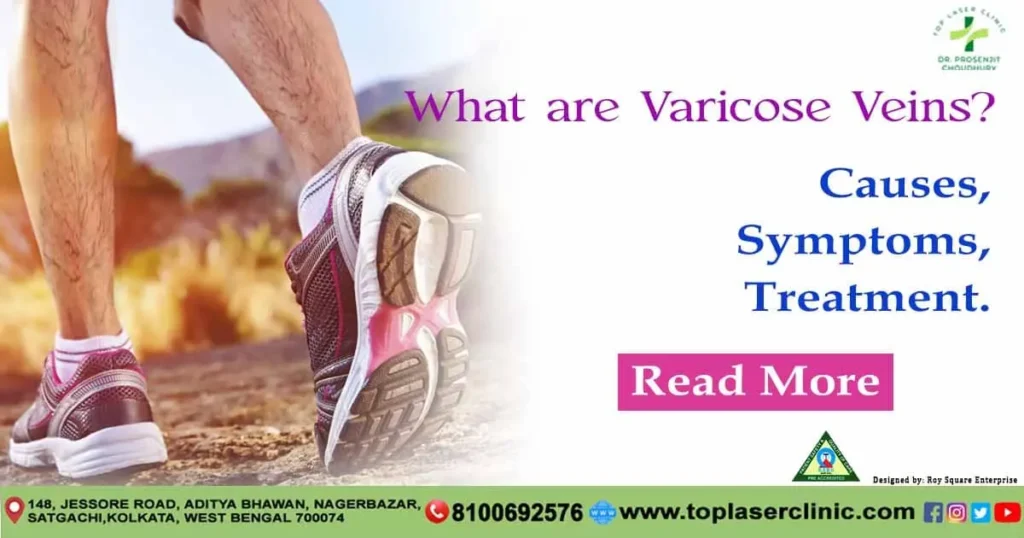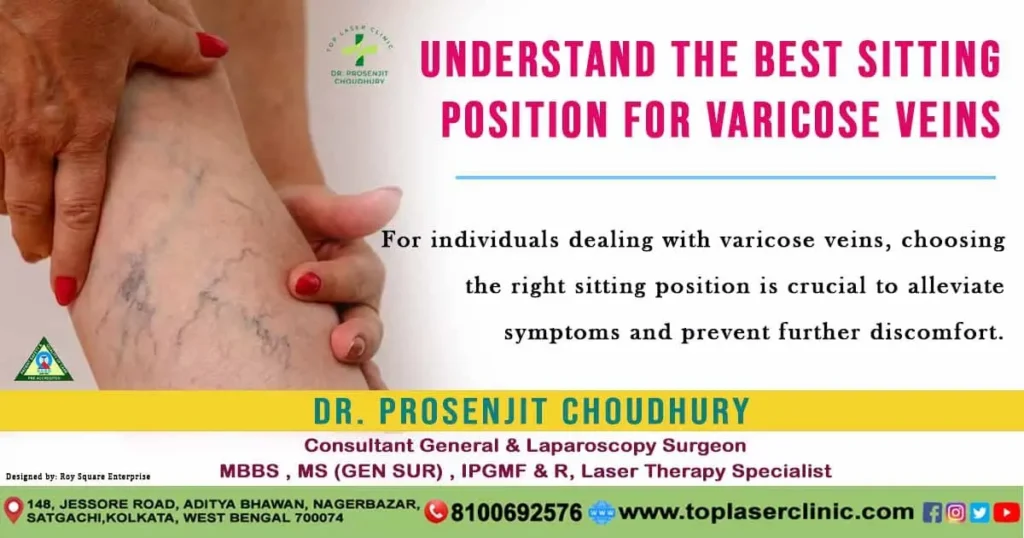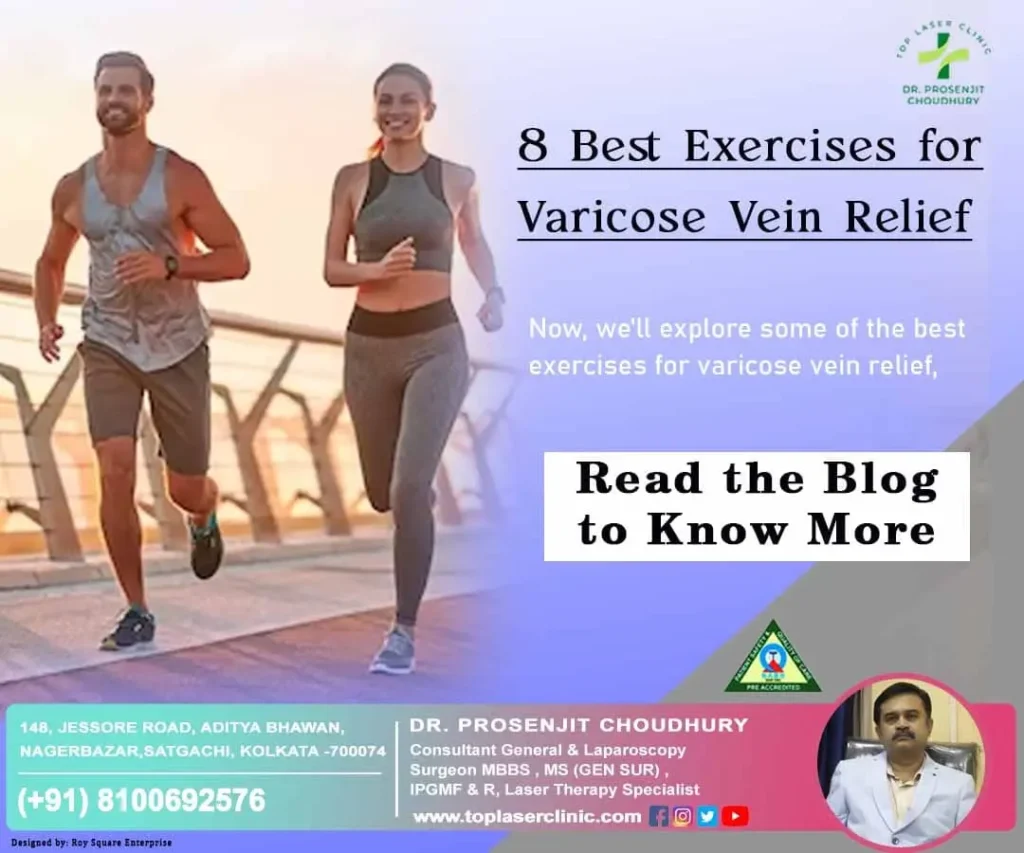
Table of Contents
Millions of people worldwide suffer from the widespread vascular ailment known as varicose veins. Despite their prevalence, many individuals may not fully understand what varicose veins are, their causes, symptoms, and available treatment options. In this blog post, we will delve into the world of varicose veins, providing valuable insights to increase awareness and promote a better understanding of this condition.
What are Varicose Veins?
Varicose veins are enlarged, swollen veins that usually appear blue or dark purple, often twisted and bulging. They most commonly occur in the legs and are the result of weakened or damaged valves within the veins. These valves, which normally prevent blood from flowing backward, may fail to function properly, causing blood to pool and veins to become enlarged.
Causes of Varicose Veins:
Heredity:Genetics: The chance of getting varicose veins is higher in families where the condition has already occurred.
Age: As individuals age, the veins may lose elasticity, leading to weakened valves.
Gender: Women are more likely to develop varicose veins, especially during pregnancy and hormonal changes.
Prolonged Standing or Sitting: Jobs or lifestyles that involve long periods of standing or sitting can contribute to the development of varicose veins.
Obesity: Excess weight puts additional pressure on the veins, potentially causing valve dysfunction.
Symptoms of Varicose Veins:
Visible, bulging veins: The most obvious sign of varicose veins is the appearance of swollen, twisted veins.
Aching or throbbing pain: Many individuals with varicose veins experience discomfort or pain in the affected areas.
Swelling and heaviness: Legs may feel heavy or swollen, particularly after extended periods of standing.
Skin changes: The skin around varicose veins may become discolored, dry, or itchy.
Treatment Options:
Lifestyle Changes: Regular exercise, maintaining a healthy weight, and avoiding prolonged periods of sitting or standing can help alleviate symptoms.
Compression Stockings: These special stockings apply pressure to the legs, promoting better blood flow and reducing swelling.
Sclerotherapy: A minimally invasive procedure involving the injection of a solution into the affected veins, causing them to collapse and fade.
Endovenous Laser Treatment (EVLT): A laser is used to close off the affected vein, redirecting blood flow to healthier veins.
Surgery: In some extreme cases, surgical procedures such as vein stripping or ligation are recommended.
Understand the best sitting position for varicose veins:

For individuals dealing with varicose veins, choosing the right sitting position is crucial to alleviate symptoms and prevent further discomfort. In this blog post, we will explore the best sitting positions that can contribute to varicose vein relief and overall leg health.
Sit with Legs Elevated : Elevating your legs while sitting can help reduce the pressure on your veins and improve blood circulation. If possible, prop your legs up on a stool or another surface, ensuring that they are above the level of your heart. This position encourages blood to flow back towards the heart, reducing the likelihood of pooling in the veins.
Cross-Legged Position : Sitting cross-legged on the floor or with one ankle resting on the opposite knee can promote better circulation. This position helps in reducing pressure on the veins and prevents blood from pooling in the lower extremities.
Use a Footrest : Elevating your feet with a footrest or a small stool while sitting at a desk or table can improve blood flow and reduce strain on your veins. Ensure that your knees are bent at a 90-degree angle for optimal comfort.
Avoid Prolonged Sitting : Regardless of the position, it’s essential to avoid sitting for long periods continuously. Take breaks, stand up, stretch, and walk around periodically to keep the blood flowing and prevent stagnant circulation.
Sit on an Exercise Ball : Opting for an exercise ball as your chair promotes constant micro-movements, engaging the muscles in your legs and encouraging blood circulation. This dynamic sitting option can also help improve posture, reducing the strain on your veins.
Proper Ergonomics : If you spend significant time at a desk, ensure your workstation is set up with proper ergonomics. Adjust the height of your chair, desk, and computer to promote good posture and minimize stress on your legs.
Use Supportive Cushions : Consider using cushions or pillows to support your lower back and promote a more comfortable sitting position. This helps maintain good posture and reduces pressure on your veins.
While sitting is an inevitable part of our daily lives, adopting the right sitting positions can significantly contribute to varicose vein relief. Whether it’s elevating your legs, using supportive furniture, or incorporating regular breaks, these small adjustments can make a big difference in maintaining healthy blood circulation and preventing further discomfort associated with varicose veins. Always consult with a healthcare professional for personalized advice and additional strategies to manage varicose veins effectively.
Best Exercises for Varicose Vein Relief:

Now, we’ll explore some of the best exercises for varicose vein relief, focusing on activities that promote improved circulation, strengthen leg muscles, and contribute to overall vascular health.
Walking: Walking is a low-impact, accessible exercise that benefits overall cardiovascular health and helps pump blood from the legs back to the heart. Try to walk briskly for at least half an hour everyday. Consider incorporating intervals of faster walking to further enhance blood circulation.
Cycling: Cycling is an excellent option for those seeking a low-impact exercise that engages the leg muscles. Whether on a stationary bike or outdoors, cycling promotes blood flow and strengthens the calf muscles, which play a key role in supporting healthy veins.
Swimming:Swimming and water aerobics are ideal for individuals with varicose veins as they provide resistance without putting stress on the joints. The buoyancy of water reduces the impact on the legs while working various muscle groups and promoting circulation.
Leg Elevation Exercises:Lie on your back and elevate your legs against a wall, allowing blood to flow back towards the heart. This simple exercise helps reduce swelling and pressure in the veins. Hold the position for 10-15 minutes, gradually increasing the duration as your comfort allows.
Calf Raises: Calf raises strengthen the muscles in the lower legs, improving blood circulation. With your feet hip-width apart, stand up, come up onto your toes, and then come back down. Repeat 15-20 times, gradually increasing the repetitions as your strength improves.
Ankle Flexes and Rotations: Sit or lie down and move your ankles in circular motions and flex them back and forth. This helps stimulate blood flow and prevents blood from pooling in the lower extremities.
Yoga: Certain yoga poses, such as legs-up-the-wall pose and inversions, can help promote blood circulation and alleviate symptoms associated with varicose veins. Consult with a yoga instructor to ensure proper form and technique.
Resistance Training: Incorporating resistance training, especially focused on the lower body, can help build muscle strength. Exercises like squats and lunges engage multiple muscle groups, supporting overall leg health.
Regular exercise is a key component of managing varicose veins, promoting blood circulation, and strengthening the muscles that play a role in vascular health. By incorporating these exercises into your daily life, you can take proactive steps towards maintaining healthy legs and managing varicose veins effectively.
However, before starting an exercise routine for varicose veins, it’s crucial to consider several factors to ensure your safety and maximize the benefits. Here are some important things to keep in mind:
Consultation with Healthcare Professional:
Before beginning any exercise program, consult with your healthcare provider, especially if you have pre-existing medical conditions or concerns. They can assess your specific situation and provide personalized recommendations based on your health status.
Type of Varicose Veins:
Varicose veins vary in severity and location. The type and intensity of exercises may need to be tailored to your specific condition. Your healthcare provider can guide you on the most suitable exercises based on the location and severity of your varicose veins.
Avoid High-Impact Activities:
High-impact exercises, such as running or jumping, may exacerbate the symptoms of varicose veins. Choose low-impact activities like walking, cycling, or swimming to minimize stress on your veins and joints.
Compression Garments:
Consider wearing compression stockings or sleeves during exercise. These garments help improve blood circulation and reduce swelling in the legs. Your healthcare provider can recommend the appropriate level of compression for your condition.
Gradual Progression:
Exercise for a longer period of time and with more intensity after starting off gently. Activities that are sudden or severe can put strain on your veins and make you more uncomfortable. Pay attention to your body’s signals and move at a comfortable speed.
Proper Warm-Up and Cool Down:
Begin each exercise session with a proper warm-up to prepare your muscles and circulatory system. Cooling down afterward helps prevent muscle stiffness and promotes healthy blood circulation.
Hydration:
Stay well-hydrated before, during, and after exercise. Proper hydration supports overall vascular health and helps maintain optimal blood flow.
Avoid Prolonged Standing or Sitting:
Break up long periods of sitting or standing with short walks and stretches. Prolonged periods of immobility can contribute to poor circulation and worsen varicose vein symptoms.
Listen to Your Body:
Pay heed how your body responds to exercise. If you experience pain, swelling, or discomfort, modify your routine or consult with your healthcare provider for guidance.
Incorporate Leg Elevation:
After exercising, elevate your legs for a short period. This helps in reducing swelling and aids in the venous return of blood to the heart.
Choose Appropriate Footwear:
Wear comfortable, supportive shoes, especially if your exercise routine involves walking or other weight-bearing activities. Proper footwear can promote good posture and reduce strain on your legs.
Regular Check-ups:
Schedule regular follow-up appointments with your healthcare provider to monitor the progress of your varicose vein management. They can adjust your exercise plan as needed based on your health status.
Remember, the goal of exercising for varicose veins is to improve blood circulation, strengthen muscles, and reduce symptoms. By taking these considerations into account and working closely with your healthcare provider, you can create a safe and effective exercise plan tailored to your individual needs.
Varicose veins are a common vascular condition that can cause discomfort and affect the quality of life for those who experience them. Understanding the causes, symptoms, and treatment options, suitable exercises and proper sitting position is crucial for managing and preventing complications associated with varicose veins. If you suspect you have varicose veins or are experiencing related symptoms, consult with a healthcare professional for a thorough evaluation and personalized treatment plan.